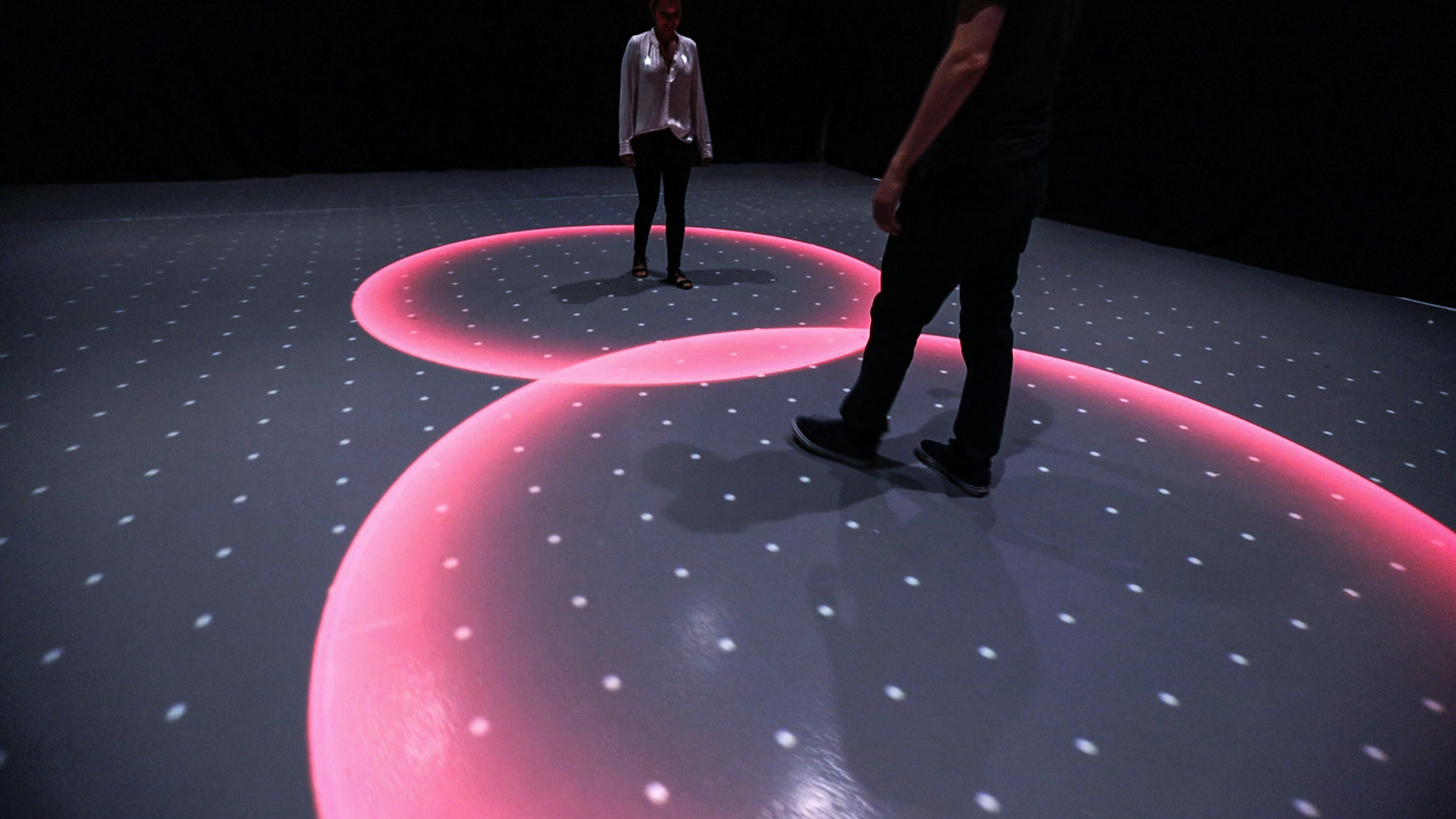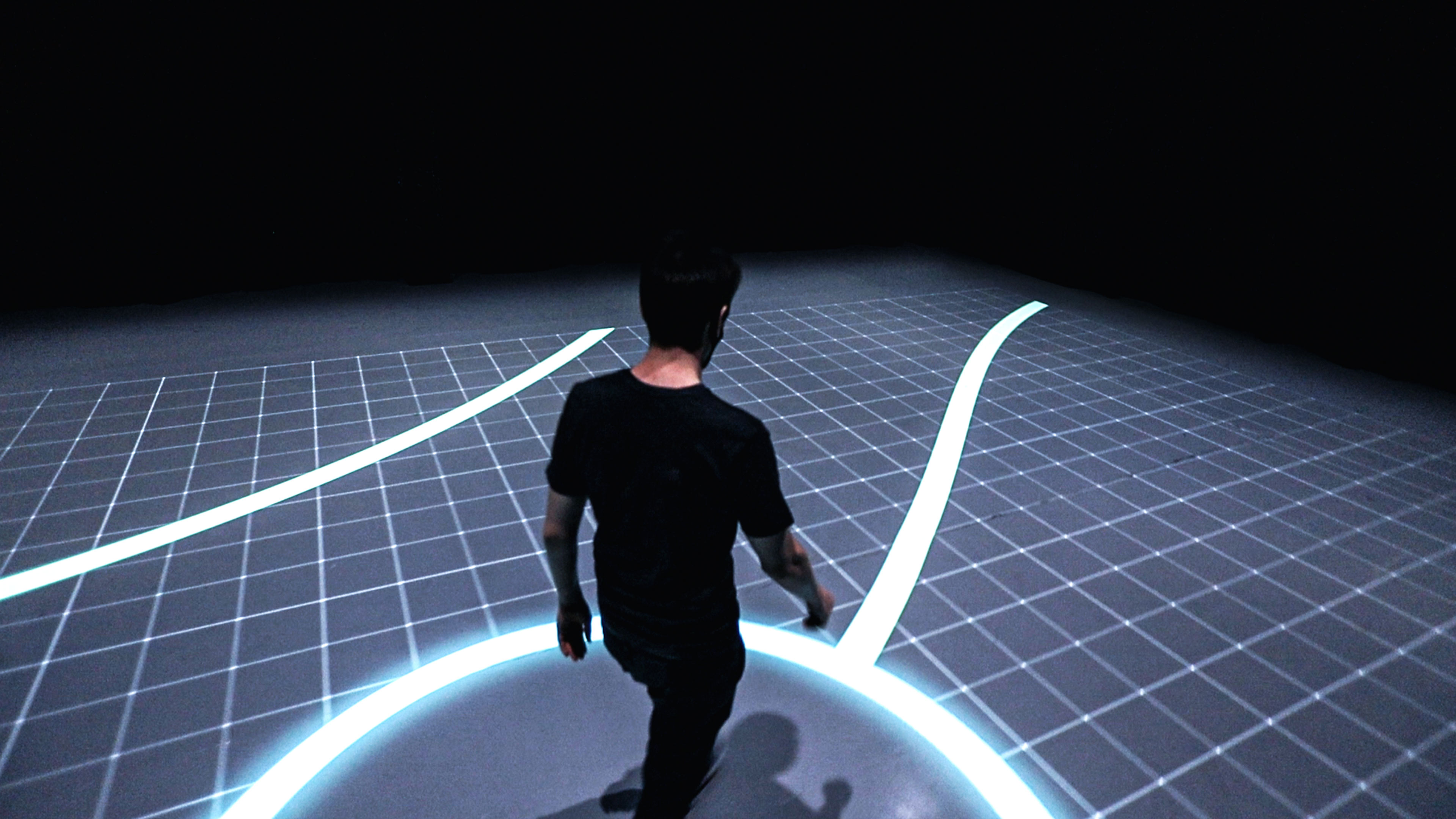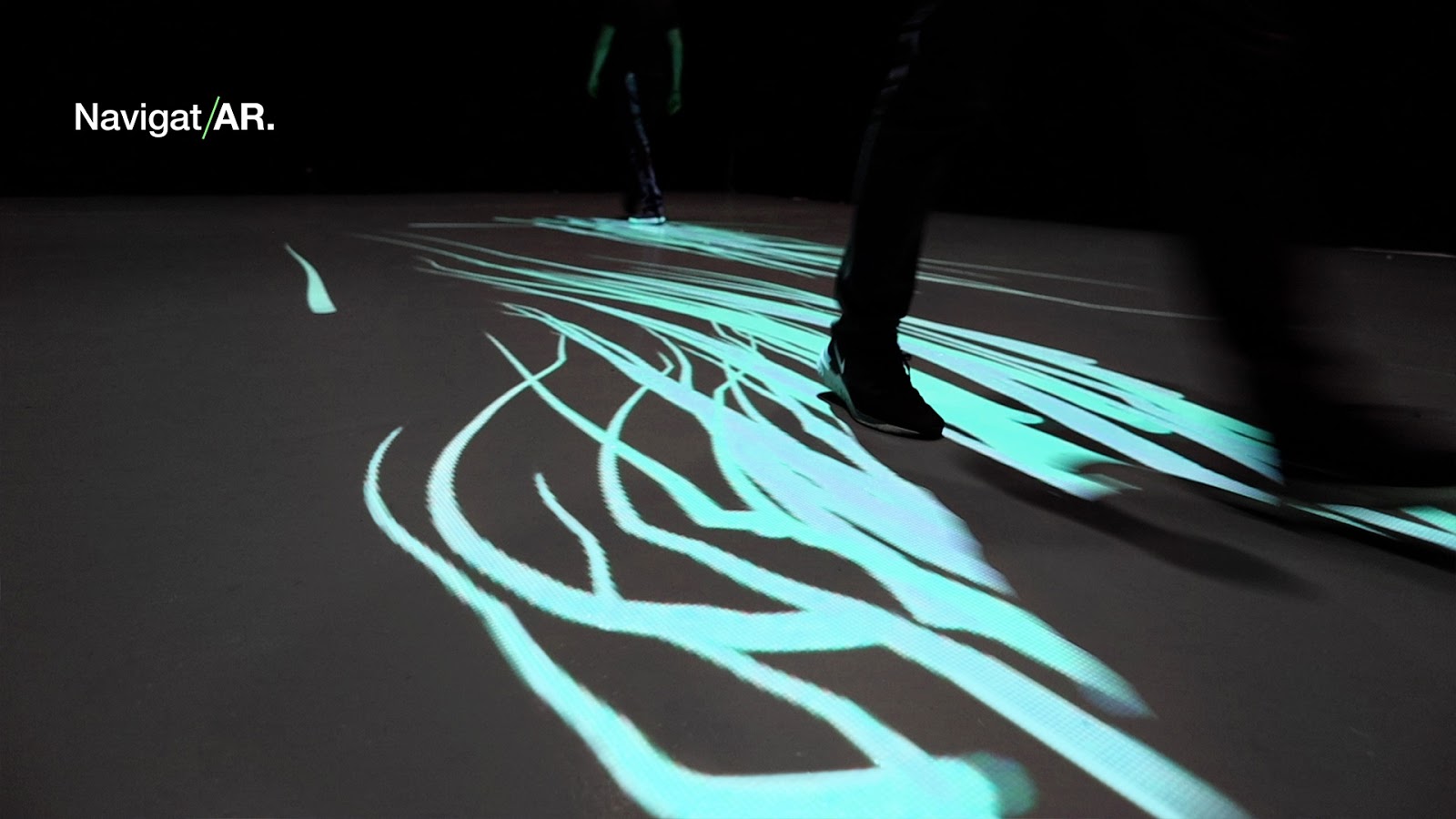Navigat/AR: Position Magazine Q&A.
As shared live experiences return, how will we keep our personal space personal? Position Magazine interviewed Andy Sexton about Navigat/AR, our intelligent wayfinding system that monitors, informs and protects.
Position: Andy, we’re glad you can be with us today. Many of our audience will be uninitiated with your new app, Navigat/AR. Can you describe the app and its intended capabilities for us?
AS: In essence, Navigat/AR is an intelligent wayfinding tool. It’s a software application that provides spatial and situational awareness, making it possible to monitor, then influence, the way people walk through busy interior spaces.

This isn’t an ‘app’ for mobile devices. It’s a custom application that takes constant data inputs from different sensors (optical, depth, lidar etc) to generate a perpetual awareness of the density and movement of human traffic in a space. This information is processed on a centralised computer system, which triggers a projected interface to be mapped directly onto the floor/walls of the space itself.
It surrounds people with real-time guidance, highlighting individuals and following their movement. Projections of ‘safe zones’ around people bring visual clarity to their proximity to each other, and allow any overlaps to be clearly acknowledged (and avoided). Dynamic wayfinding encourages movement in a single direction and can be re-routed as necessary to avoid risk. Speed, direction and velocity can also be tracked and understood to enable more targeted cleaning.
This real-time navigator allows spaces to function differently depending on capacity, activity and ever-changing local guidance. Spaces become alive, responsive and intelligent, reducing risk and building confidence.
Position: Let’s talk for a minute about your objectives as an organisation when conceiving of and developing this app. You’re a design and marketing firm – how was the decision made to develop an augmented reality app driven by spatial data?
AS: It’s a good question, and to be honest this is the first time we’ve self-funded and developed a solution like this. As an experiential studio, influencing behavioural change has always been at the heart of all our work. This is because knowing how people move through spaces, how they interact and respond to different stimuli, is critical to driving brand engagement. We form a strategic understanding of needs, then apply creativity and innovation to shape outcomes through experiences.
We’ve worked hard over more than 25 years to build a strong culture of innovation at 2LK. We’re all heavily interested and invested in emerging technology. We work for a number of high-profile tech brands like Intel and Canon. Pioneering businesses like these inherently require strong levels of innovation from us, but they also enable that by keeping us constantly at the edge of what’s possible. They’re literally designing and building the future, so engaging with them has a subtle but profound impact on the way we approach problems and challenges.
As for why we developed Navigat/AR, we saw that safe social distancing would be a huge issue for people in indoor spaces as the world adapts to life with COVID-19. From that need, it evolved really quickly and organically from a ‘how might we’ to a proof of concept.

COVID-19 has really torn through the experiential sector. The impact has been devastating for so many. After much of 2LK’s project work was inevitably cancelled, we found ourselves in a truly unique position of having both time and talent in abundance. Pair this with all the nascent behaviours related to tech adoption and the many new needs as a result of COVID-19 and we had the perfect conditions for innovation to thrive. Being able to combine our creative capabilities with a real need has been a liberating and an eye-opening process for sure.
Position: Can you describe the profile of the intended audience – who should be downloading and deploying Navigat/AR?
AS: As I mentioned earlier, Navigat/AR isn’t a device-based app, so the end user and the customer are very different.
The potential end user is literally anybody who goes into an indoor space, anywhere. Broad I know, but the system could feasibly be deployed in all manner of different places and spaces to cater for a range of different situations.
The customer is anyone that manages an indoor space where people circulate. This could be event/exhibition venues, office/hotel lobbies, shopping centres, retailers, museums, leisure destinations and transport hubs like airports and train stations.
Position: Looking under the hood of the app now, how does it run from a software perspective? Are any of its modules open sourced, or based on open source modules?
AS: We’ve always been keen supporters of the open source community. With a subject that requires such urgency, it’s been the perfect source of reference, documentation and tools.
Navigat/AR has had to quickly develop, and along with our initial prototyping, we’ve investigated a few modules available through open sourcing such as TensorFlow and OpenCV. As the tool continues to develop, we’re developing more bespoke modules and characteristics to address specific tasks.
Position: How is the reception to the app – has its mettle been tested in a live environment, at any major events?
AS: Lots of the code and workflows are adaptations from previously realised projects, we’ve worked with all the sensors a number of times before, and parts of the real-time rendering system were developed and optimised over several years, but we’re yet to pull all this together and deploy Navigat/AR in a real-world setting.
That said, the reception and feedback has been amazing from those we’ve shared this with. Be they brands, technologists, industry peers, media or just family and friends, it’s incredible how many people say they could benefit from a system like this.

Just imagine the difference it could make to commercial and cultural destinations. Human behaviour cannot be governed by simply categorising spaces based on what function they perform. Regardless of where we find ourselves, risk rises and falls depending on many dynamic variables. If we can influence actions and movements more effectively, with intelligent real-time data and dynamic visual guidance, we not only add a layer of perceptual confidence but we can genuinely improve safety standards.
Some interesting conversations about bringing this to life are happening as we speak, so watch this space!
Position: What’s coming up on the horizon – are there any new features waiting in the wings, or future plans that build on the app’s proliferation?
AS: One thing’s for sure, the need for this doesn’t seem to be fading. COVID-19 is still changing our individual and collective patterns of movement, and it looks like there’s a long way to go before we settle into anything that represents the ‘old ways’. This serves to add more justification and context to continue development.
Navigat/AR is also becoming more of a brand than a product, a sort of umbrella under which will sit all sorts of iterations, extensions and other ‘product’ ideas. All of these are centred around the singular vision that bringing situational awareness to wayfinding and signage systems will help boost confidence and lift safety standards.
In the short term, we’re looking hard at other ‘outputs’ to replace projection. Projected interfaces are a good idea in principle, but with limitations. They require lots of hardware and infrastructure, and can become prohibitively costly to scale over large areas.
In response to this, we’re looking into mobile device integration, haptic feedback and even potentially physical responses. Beyond that, there’s discussion about building a more robust contextual management dashboard and integrating advanced data analytics systems.
Position: Is there anything else you’d like to add?
AS: I guess the final thought from me is that in times of change, innovation prospers through collaboration.
Whilst it’s difficult to pick through the horrors of COVID-19 and find anything good, some shining lights of positivity have emerged. Old (bad) habits are breaking and new (constructive) ones forming. In particular, I’m seeing new ways of working that were previously unimaginable.
New hyper-collaborations are increasing cognitive diversity and driving innovation forward at pace. Witness Apple and Google working on contact tracing apps, Dyson and McLaren making ventilators, or the global collaboration around clinical trial data.
And as people’s priorities, motives and relationships change, so too must future experiences. Designers, technologists and brands need to work together to develop solutions that address new needs, reward new motives and satisfy new concerns.
Co-creation and experimentation can be risky, but it can also bring positive outcomes, as in 2LK’s case with Navigat/AR. We look forward to developing new partnerships and receiving positive industry contributions as we develop more product ideas related to the key vision for the Navigat/AR umbrella.
Special thanks to Position Magazine for first publishing this Q&A in their October 2020 print issue.
More reading:
Change before you have to: Experiential 2.0